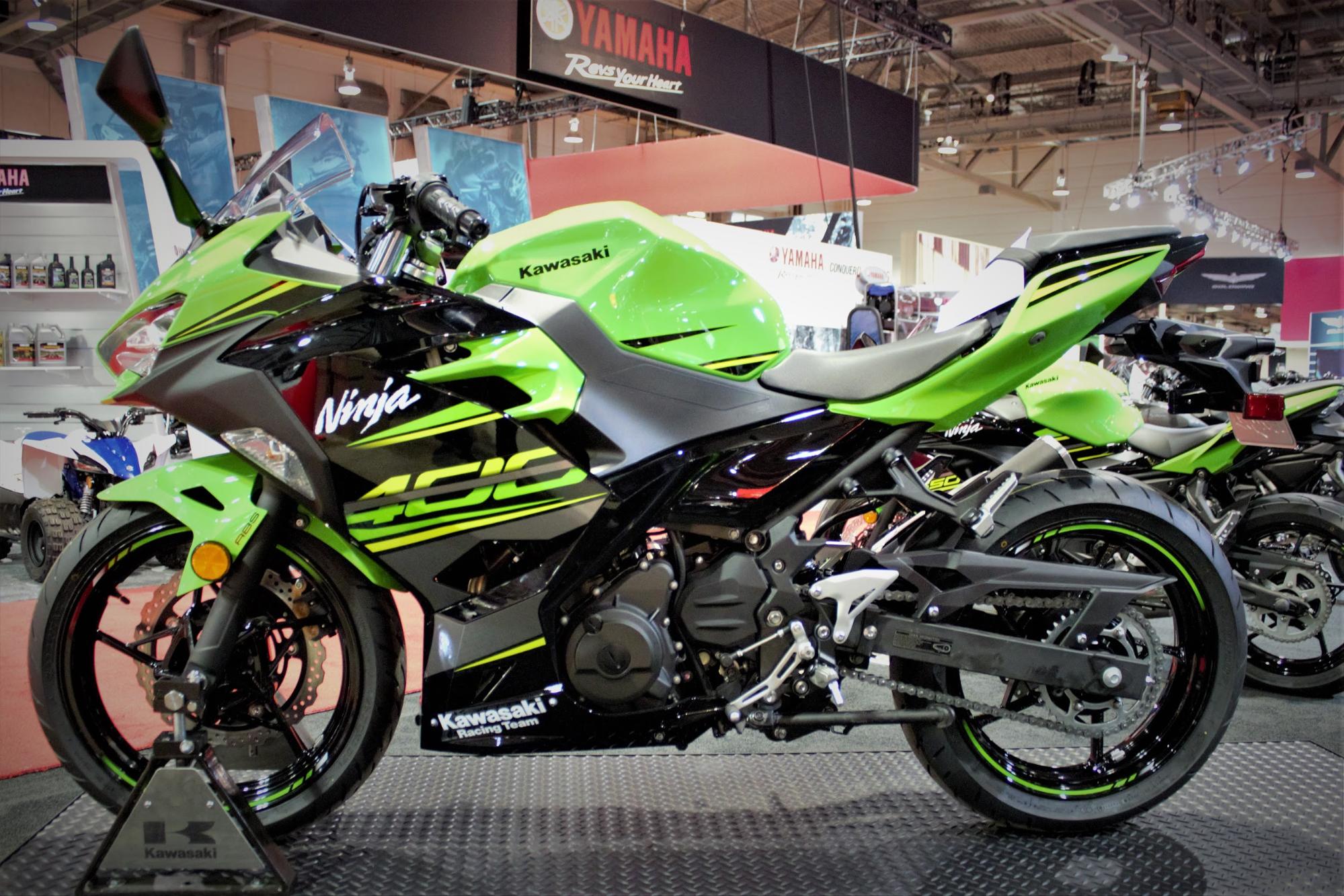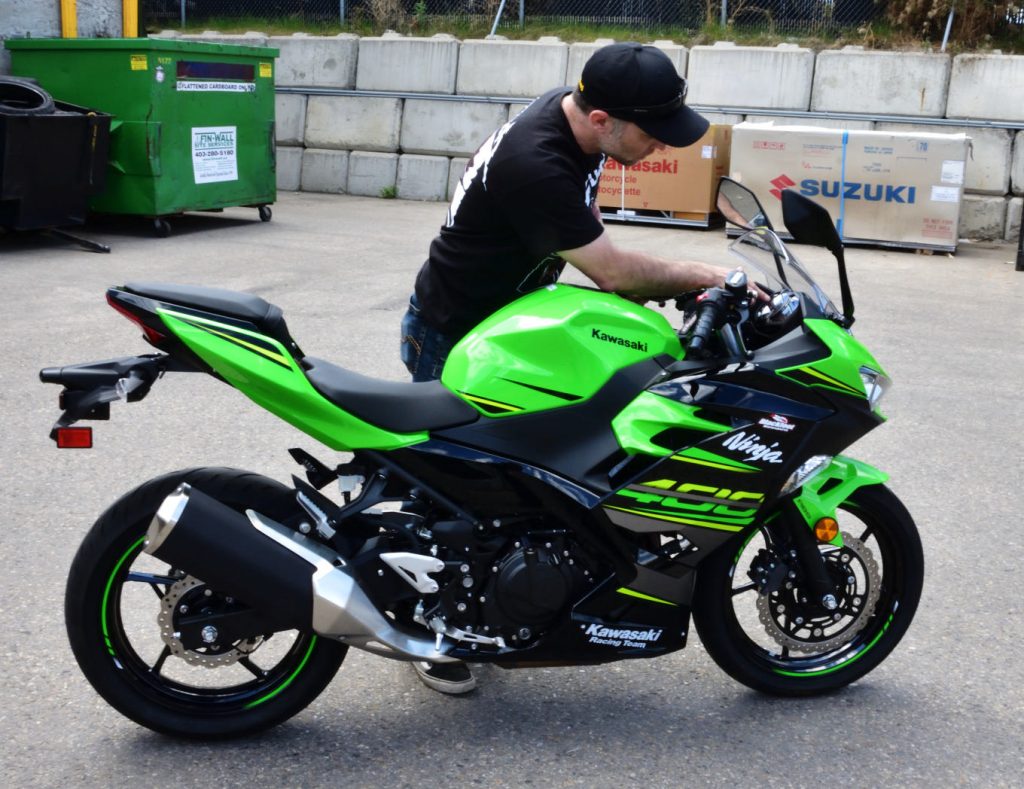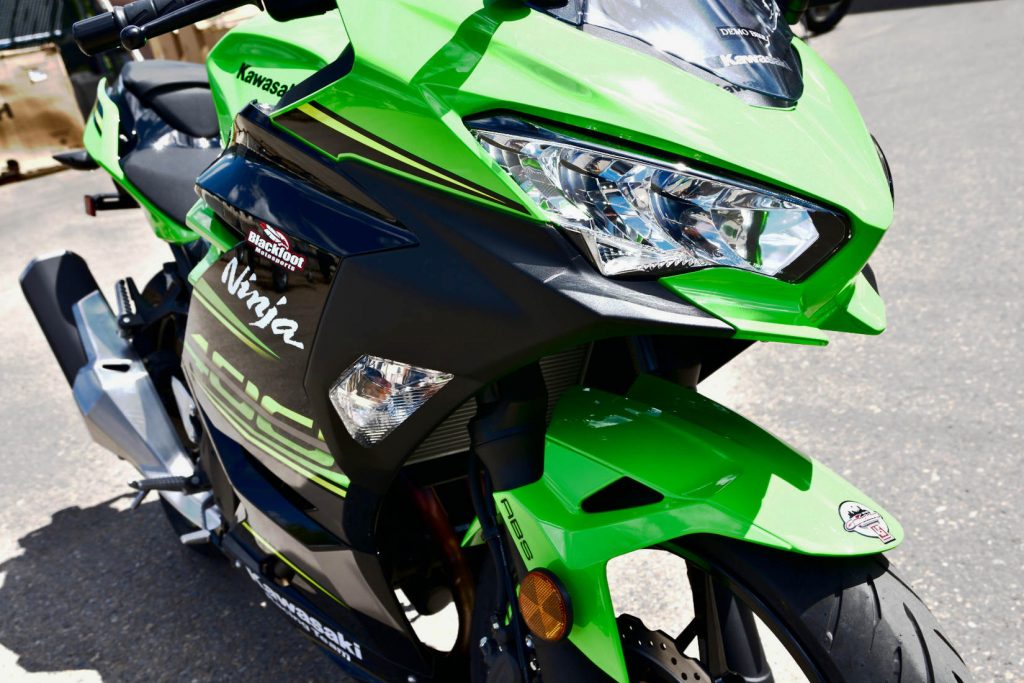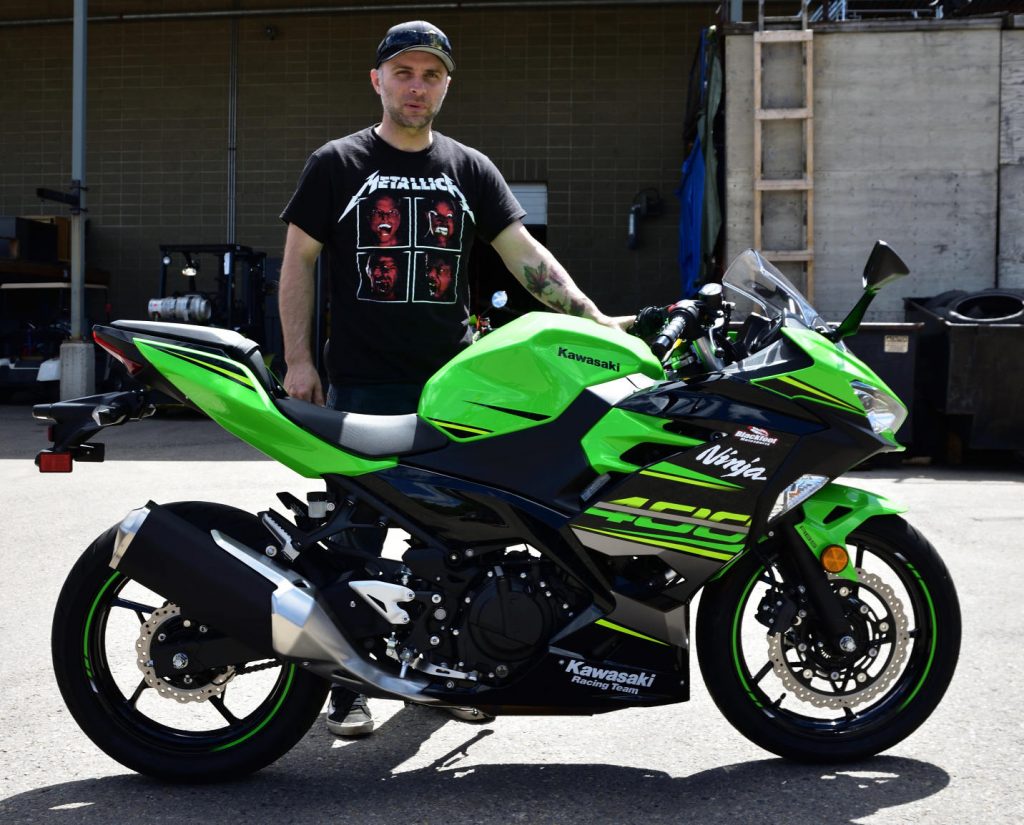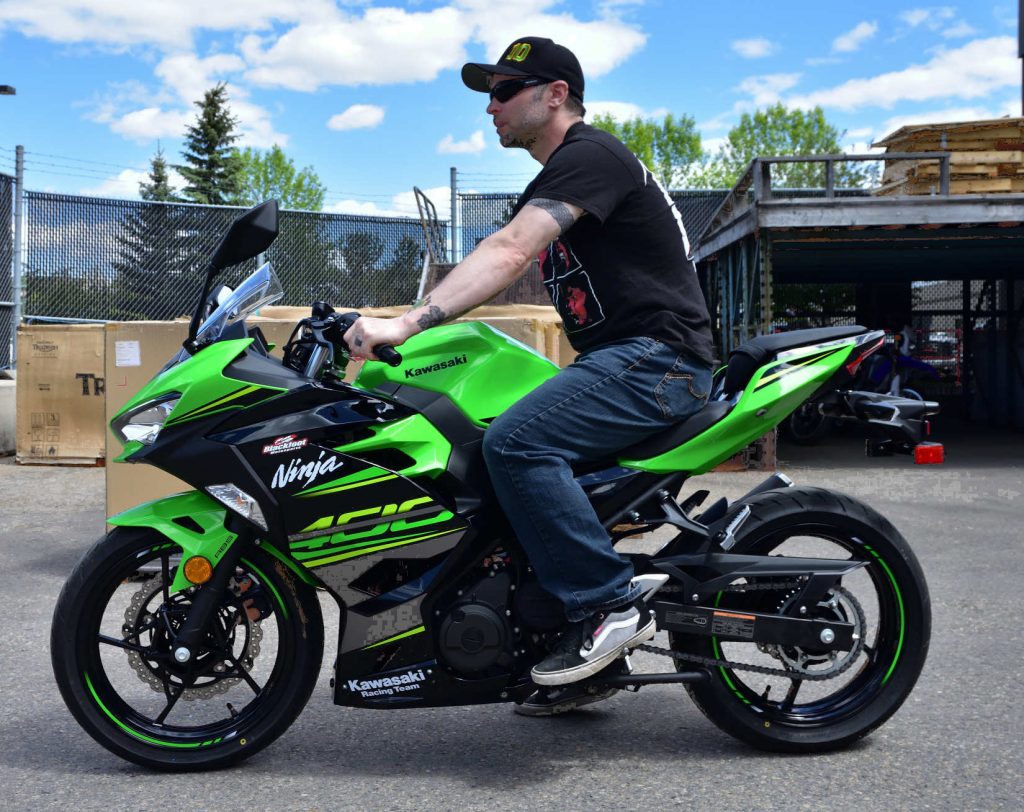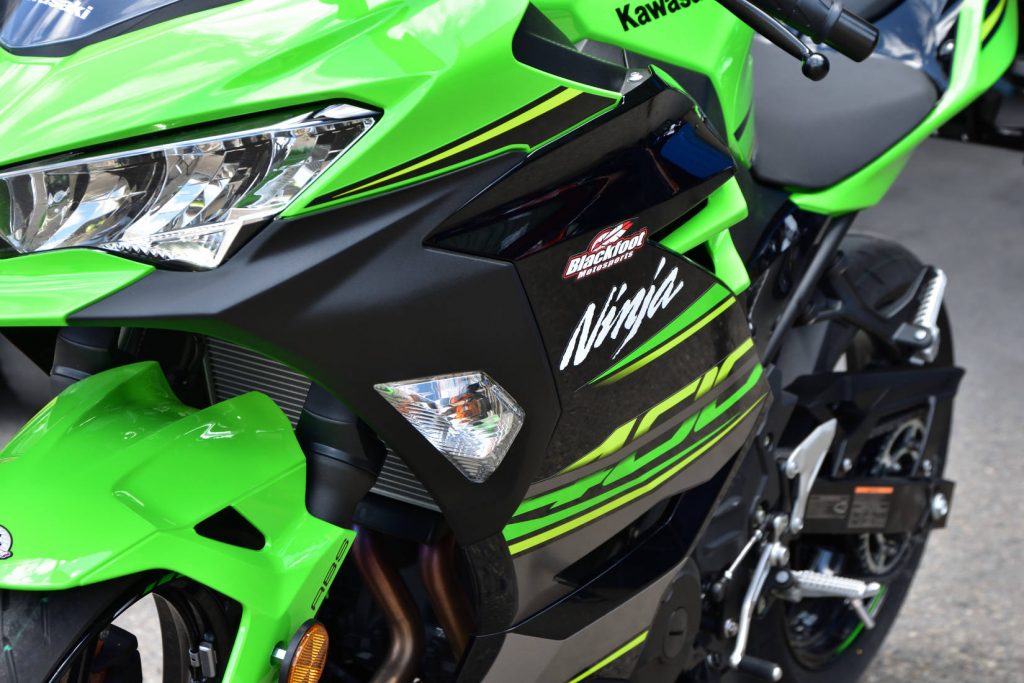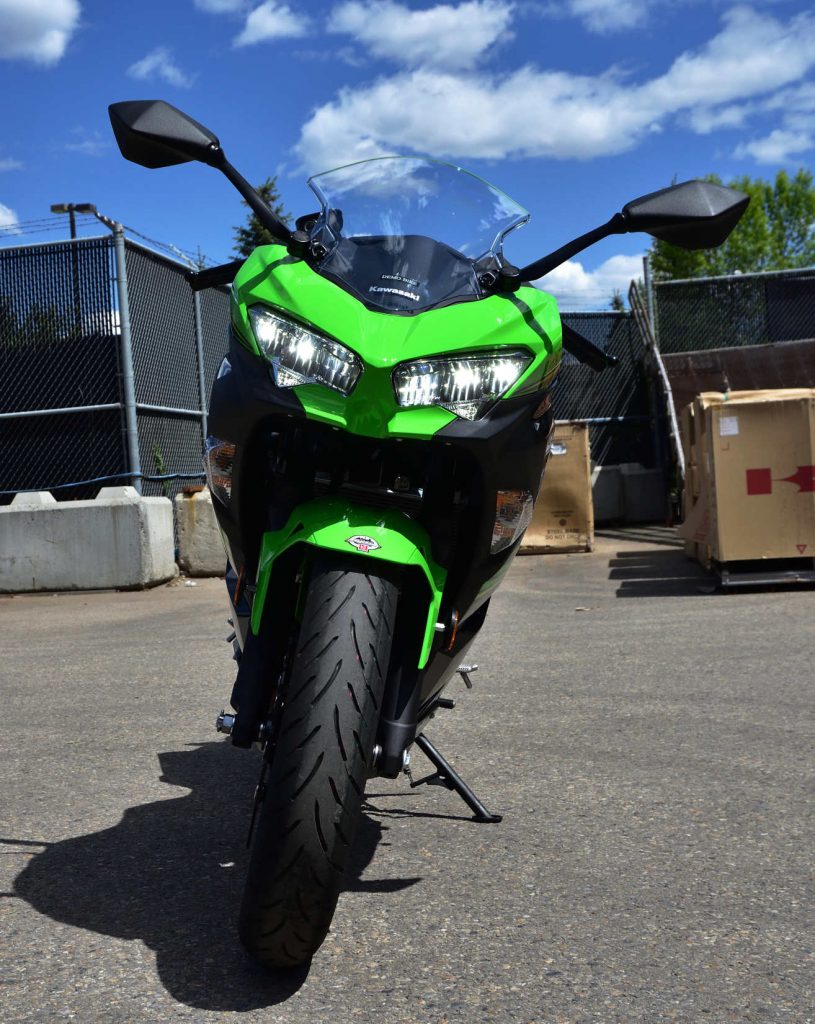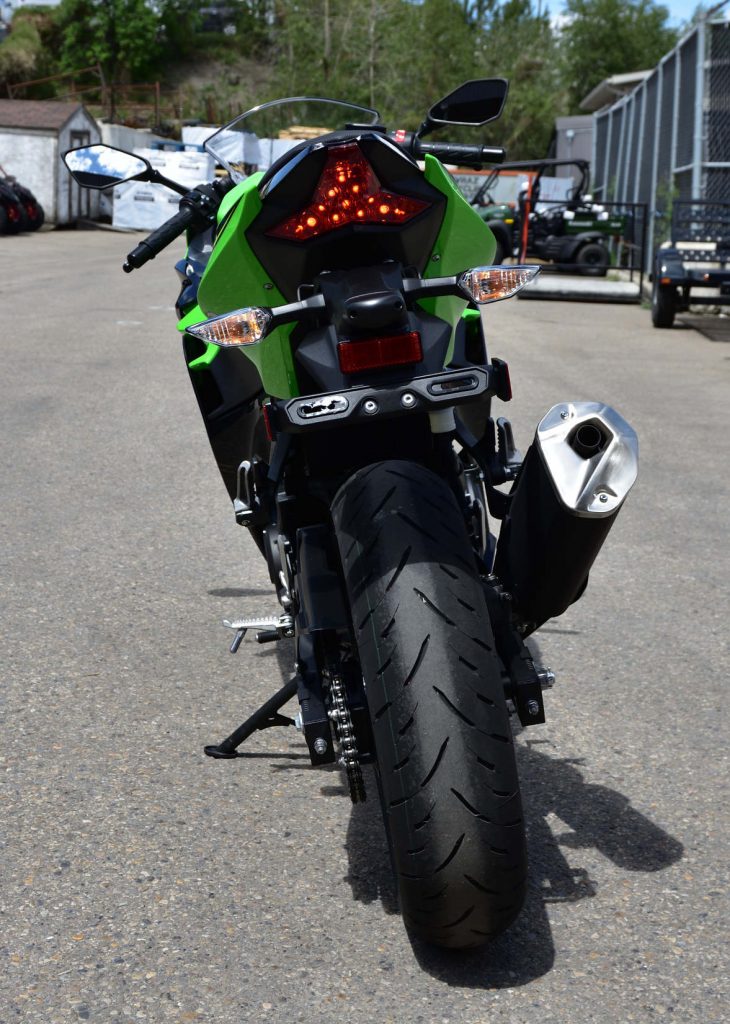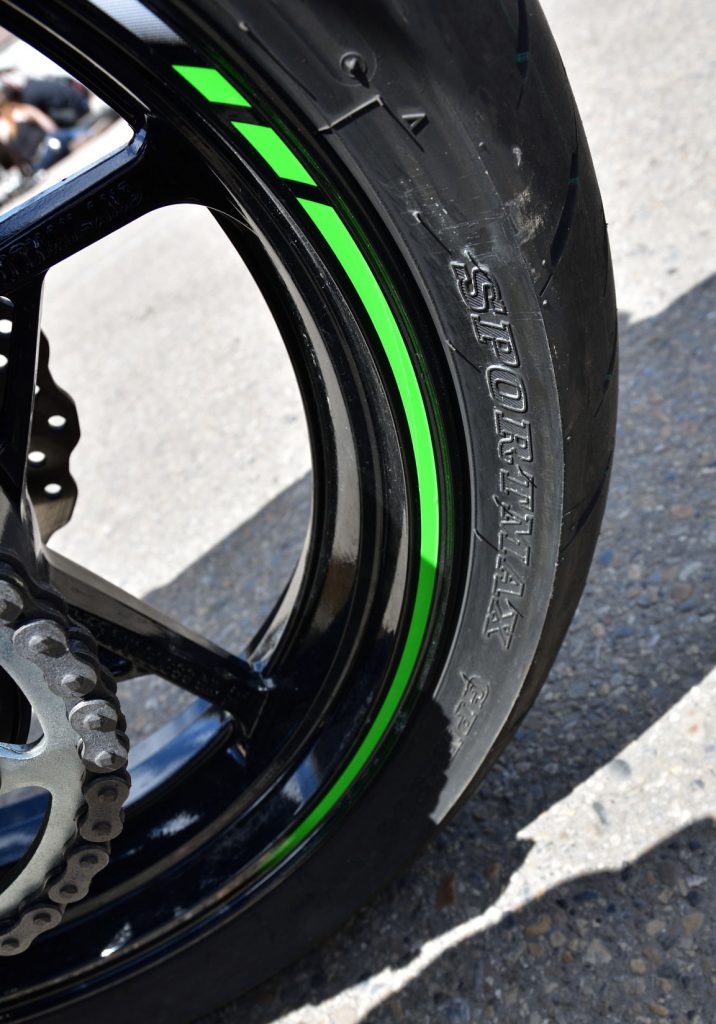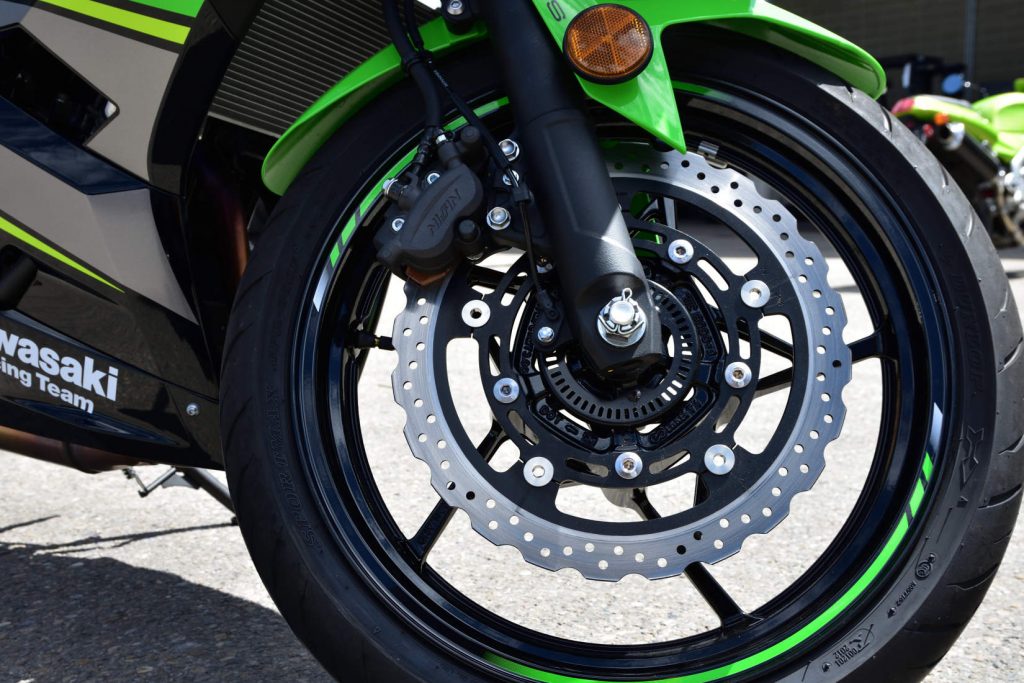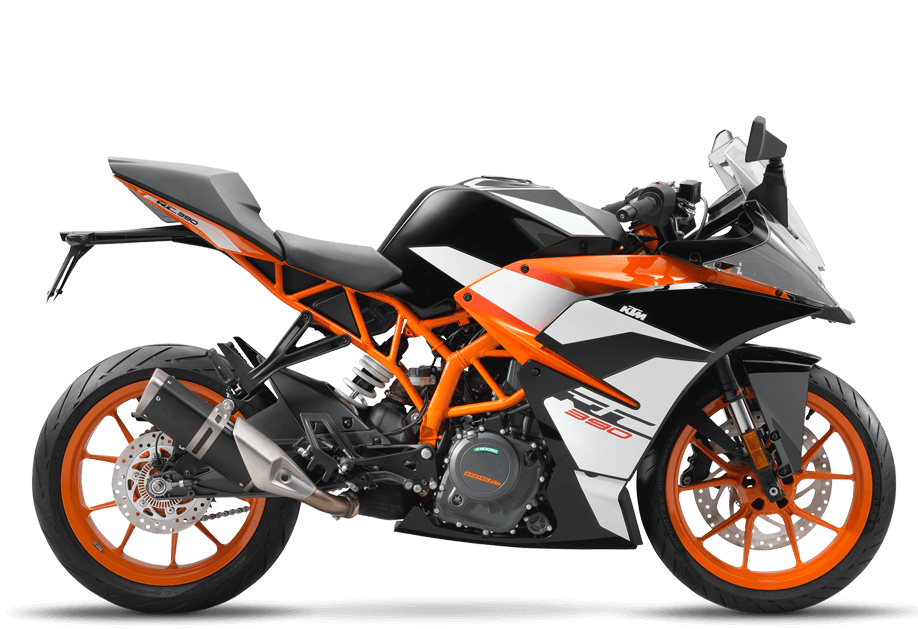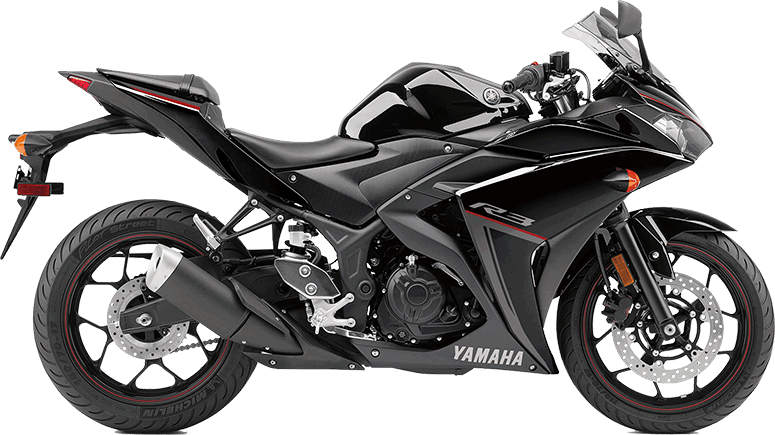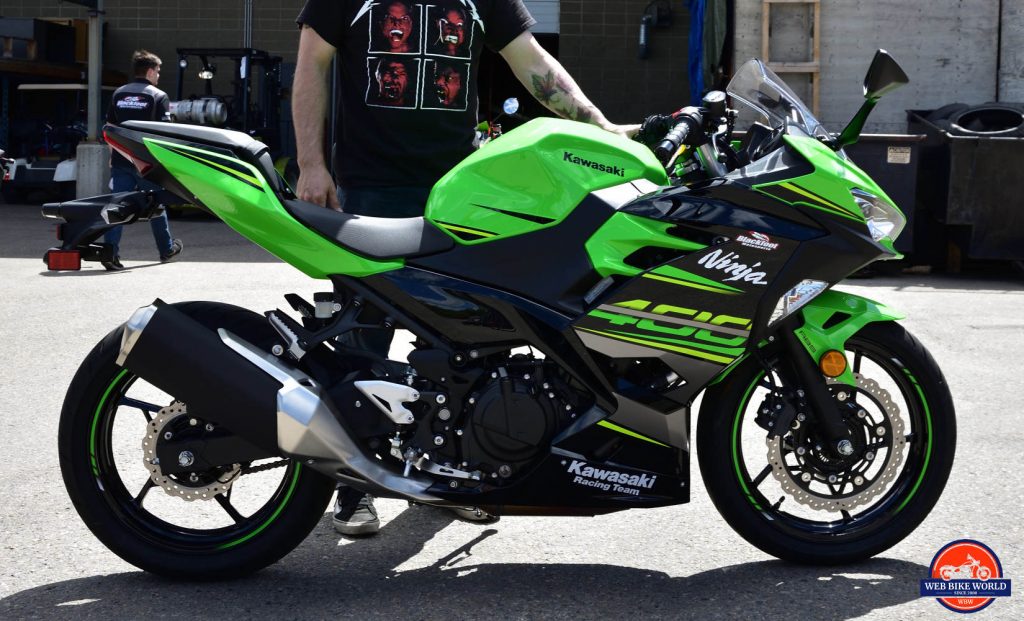I’ve been eagerly waiting for an opportunity to test ride the brand new 2018 Ninja 400. Finally last week I did just that at a Demo Day put on by the local dealership in Calgary: BlackFoot Motosports!
The new 400 Ninja is lightweight, equipped with an all new trellis frame and has noticeably more horsepower and torque than the 300 Ninja. I knew it would be good after reading the press release from Kawasaki about it, but riding is the real test.
Specifications
- 399 cc Liquid Cooled Parallel Twin DOHC engine
- Fuel injected
- 45 hp and 28 ft lbs of torque
- 6 speed transmission
- 70 mpg Fuel economy
- 31 inch seat height
- $4500 to $4999 USD
First Impressions
The 400 Ninja ABS KRT model is the most expensive and feature-rich version of the 400 and was the one I got to take for a spin. It comes clothed in traditional Kawasaki green and black paint scheme and looks like a 600cc sportbike. The hind quarter sits up high just like on the bigger sportbikes and the “Kawasaki Racing” decal on the lower fairing leaves no doubt this is a bike for people who like performance. The only clues this is a smaller displacement sportbike are the “400” decals pasted across the right and left sides and how narrow it is.
If you park beside a Ninja 650, the 400 definitely looks like the faster bike of the two.
I’m a big fan of the bright green as a high visibility feature on this bike. Overall, it has a flashy, fast and fantastic look. Let’s go for a ride!
The Ride
I was following second in the pack of riders behind the tour leader who was riding a Ninja 1000. He wasn’t using the full power of the bike during our 40 minute test ride, but he wasn’t out for a Sunday ride either.
In the city the 400 kept up well matching the 1000 whilst taking off from lights and was easier to flick around while changing lanes in traffic or going around long, sweeping turns.
Nimble and ultra lightweight at only 366 lbs, this 400 is a perfect urban sportbike. That zippy attitude put a grin on my face and made me want to push the lead rider to open things up more.
When we merged on to the highway I dropped a couple of gears and really twisted the throttle to make sure the bigger Ninja didn’t run away from me. I had to haul on the brakes fairly hard to avoid passing the tour leader (he had warned us not to do that) even though he had accelerated to over 80 mph! Yes, he could have easily pulled away from there if he had demanded more speed from his bike, but I was sufficiently convinced the 400 had the torque and horsepower to be good on the highway as well as in the city now.
Riding Position
I give plenty of credit to Kawasaki for somehow making a sportbike comfortable with this riding position.
The seat is pretty tall on this Ninja at almost 32 inches, but the handlebars are set higher by a fair margin. Even though I’m only 5’7” my upper body was nearly upright on it and very little weight was on my wrists.
Assist Slipper Clutch
I was grateful for the light pull of the clutch lever since we were riding in heavy traffic for the first 10 minutes of the test ride. It’s not as light as the one on the Versys 300 (which almost feels like it’s not attached to anything!), but I didn’t experience the hand fatigue problems I have on most any other bike in the same environment.
For a beginner rider this light pull would be most welcomed, while learning how to manage a clutch pull and should score big points for buying the 400 if you’re looking for a beginner sportbike.
Dash/Display
The 400 has the same dash found on the bigger Ninja 650. In the photos I’d seen before my ride I thought it was awesome, being that it had a high quality analog tachometer coupled with a digital speedometer, fuel gauge, gear position indicator, shift light, temperature gauge, clock, fuel consumption information, etc.
It was a very bright and sunny day on my test ride and I found it slightly difficult to read the digital part of the display. It almost seemed like the bright sun was casting a shadow in behind the numbers on the screen.
The tachometer was excellent though, and the shift warning light got my attention when I revved high enough a few times to set it off.
Lights And Integrated Turn Signals
I love the turn signal locations on the front of the bike. They show up perfectly to traffic on the sides and front because of their location and keep the look clean.
The dual LED headlamps glow fiercy white and bright. This is how it’s done when it comes to good lighting, although I really like the trend Yamaha and Ducati are setting of having very minimalist “slits” of LED headlights on the new R1 and Panigale. I would love to see that on the Ninja instead.
Personality And Exhaust Note
Believe it or not I’m a sound snob. I want a bike to sounds good and to be fair most do. The 400 has a nice low growl to it down low that burbles up to a satisfying roar as the revs come up. The stock can on it sounds decent, but I would enjoy it with an aftermarket one more.
The engine as I already pointed out has an enjoyable blend of torque and power, perfect for a confident new sport rider. The inline twin is a reliable and low maintenance design Kawasaki built especially for this bike. It makes 6 horsepower more than the old 300 Ninja and is roughly the same physical size, but weighs less.
The weight savings from the engine along with the trellis frame puts the 400 about 20 lbs lighter than the 300 Ninja overall.
Tires
The Bridgestone Sportmax D214 tires are a great choice for the bike. They wear well, yet stick to the road as any rider would want. I found them unremarkably good on my test drive.
These are the same tires used on the Ninja 650 and Vulcan S as well.
Braking
I’ve heard other reviewers say that the brakes fade with really aggressive use on the 400 Ninja, but I experienced nothing negative about them on my ride. I wasn’t exactly flogging the bike around a racetrack as the other reviewers were though.
The front rotor is the same one used on larger Ninja sportbikes, but it’s only a single disc on the 400. It’s unnecessary to double up the brakes on this little Ninja from what I can tell. Having one less rotor and set of brake pads to maintain is a good thing.
I didn’t manage to get the ABS to activate on my test ride, but I would urge anyone buying the bike to opt for the ABS version. It’s always better to have it and not need it than want it and not have it.
Mirrors
Unfortunately the mirrors vibrate pretty badly at higher rpms on the bike to the point the image is blurry. This isn’t uncommon in many sport bikes. It’s annoying, but not a deal breaker on what otherwise is an excellent bike.
Service Intervals And Reliability
The Ninja 400 is a typical Kawasaki. You get terrific reliability and long intervals between expensive services. The valves only need checking/adjusting every 15,000 miles on the Ninja.
Compare this to the next best comparable small sportbike: the KTM RC390. It needs a valve set after the first 600 miles and then every 9,000 miles afterwards.
The Ninja makes more horsepower and torque than the KTM does and so really the choice is clear between the two, unless you prefer and must have the KTM “orange panache and styling”. I wouldn’t blame anyone for picking the KTM – it’s an awesome motorcycle – but the Ninja would be my pick between the two.
Check out this long term review that Ari Henning from Motorcyclist did on the KTM and it definitely will swing your choice to the green bike.
https://www.motorcyclistonline.com/long-term-ktm-rc390-final-update
The Yamaha R3 is another excellent bike, has the same long service intervals and low cost of ownership, but doesn’t make near the same power the Ninja does.
Final Verdict?
I really like this Ninja. It’s just plain fun to ride no matter if you’re a newbie or an experienced rider. If you’re a confident learner looking to ride something sporty, this new Ninja is the best place to start.
It’s a little on the tall side to be super comfortable if you’re short, but the bike is so light that I wouldn’t hesitate to recommend it to shorter riders just getting into riding.
I like that the power is strong, yet linear, or gradual with no ridiculous powerband to deal with. Parallel twin engines are known for giving that exact kind of ride experience and the Ninja 400 is no exception.
It handles great, doesn’t cost an arm and a leg to buy or maintain, and can definitely be a “gateway sport bike” to the inline 4 cylinder sport and supersport bikes. Get comfortable with the 400 and then I think you’ll easily make the jump to just about any bike without having to go through a big learning curve.

